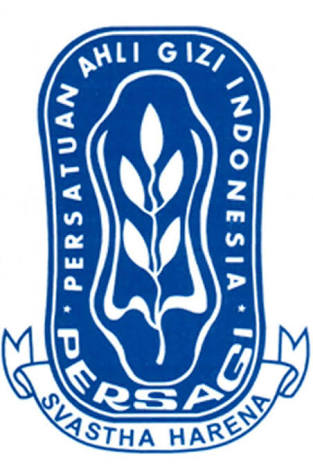Body Mass Index, Eating Habits and Physical Activity Among Dietetics Students in Universiti Sultan Zainal Abidin
Abstract
Full Text:
PDFReferences
Abubakar, H., Razif Bin Shahril, M., Syed, S., & Wafa, S. (2016). Weight Status, Dietary Intake and Eating Behaviour of Nigerian Postgraduate Students in UniSZA, Malaysia. In Malaysian Journal of Public Health Medicine 16 (3).
Al-hazzaa, H. M., Abahussain, N. A., Al-sobayel, H. I., Qahwaji, D. M., & Musaiger, A. O. (2011). Physical activity , sedentary behaviors and dietary habits among Saudi adolescents relative to age , gender and region. International Journal of Behavioral Nutrition and Physical Activity, 8(1), 140..
Al-Rethaiaa, A. S., Fahmy, A.-E. A., Naseem, †, & Al-Shwaiyat, M. (2010). Obesity and eating habits among college students in Saudi Arabia: a cross sectional study. 9(39).
Asghar, A., Shah, A. M., Hussain, A. A., Tahir, A., & Asghar, H. (2019). Frequency of Pre-obesity and Obesity in Medical Students of Karachi and the Predisposing Lifestyle Habits. 11(1), 1–8.
El-Ghazali S, Ibrahim JM, Kandari BM, I. N. (2010). The relationship between lifestyle and body mass index among university students in Kuwait. Egyptian J Comm Med, 28, 69–76.
El-Kassas G, Z. F. (2016). Exploration of the dietary and lifestyle behaviors and weight status and their self-percep- tions among health sciences university students in North Lebanon. BioMed Res Int, 1–14.
Esra Gunes, F., Bekiroglu, N., Imeryuz, N., & Agirbasli, M. (2012). Relation between Eating Habits and a High Body Mass Index among Freshman Students: A Cross-Sectional Study. Journal of the American College of Nutrition, 31(3), 1–8.
Gan, W. Y., Mohd Nasir, M. T., Zalilah, M. S., & Hazizi, A. S. (2011). Differences in eating behaviours, dietary intake and body weight status between male and female Malaysian university students. Malaysian Journal of Nutrition, 17(2), 213–228.
Ganasegeran K, Al-Dubail S, Qureshi AM, Al-abed AA, RizalAM, A. (2012). Social and psychological factors affecting eating habits among university students in a Malaysian medical school: a cross-sectional study. Nutri J, 11, 48.
Giovannini, M., Agostoni, C. and Shamir, R. (2010). Symposium overview: Do we all eat breakfast and is it important? Critical Reviews in Food Science and Nutrition, 50(2), 97–99.
Goon, S., Bipasha, M. S., & Islam, S. (2014). Fast food consumption and obesity risk among university students of Bangladesh. European Journal of Preventive Medicine, 2(6), 99–104.
Gow RW, Trace SE, M. S. (2010). Preventing weight gain in first year college students: an online Intervention to prevent the freshman fifteen. Eat Behav, 11, 33–39.
Hamrani A, Mehdad S, El-Kari K, El-Hamdouchi I, El-Menchawy I, et al. (2015). Physical activity, and dietary habits among Moroccan adolescents. Public Health Nutr, 18, 1793–1800.
Hasamnis, A., Patil, S., Tun, Z. M., & Ruslan, N. A. binti. (2018). Nutrition and Exercise Habits Amongst Medical Students in a Private University in Malaysia. 285–292.
Hingorjo, M. R., Syed, S., & Qureshi, M. A. (2009). Overweight and obesity in students of a Dental College of Karachi: Lifestyle influence and measurement by an appropriate anthropometric index. Journal of the Pakistan Medical Association, 59(8), 528–532.
Januszyk, K., Liu, Q., & Lima, C. D. (2011). Activities of human RRP6 and structure of the human RRP6 catalytic domain. Educational and Psychological Measurement, 17(8), 1566–1577.
Łaszek M., Nowacka E., Gawron- Skarbek A., S. F. (2011). Negative behavior patterns of students. Part II. Physical activity and eating habits. Probl Hig Epidemiol, 92(3), 461–465.
Levitsky, D. a, & Pacanowski, C. R. (2013). Effect of skipping breakfast on subsequent energy intake. Physiology & Behavior, 119, 9–16.
Likus, W., Milka, D., Bajor, G., Jachacz-łopata, M., & Dorzak, B. (2013). Dietray Habits and Physical Activity in Students from The Medical University of Silesia in Poland. National Institute of Public Health, 64(4), 317–324.
Mahfouz, M. S., Makeen, A. M., Akour, A. Y., Madkhly, T. M., Hakami, H. M., Shaabi, W. M., Ageeli, A. F., Khawaj, F. A., Najmi, K. A., Hakami, S. Y., & Al-Ali, M. A. (2016). Nutritional habits and weight status among Jazan university students: Eating patterns and healthy lifestyle assessment. Epidemiology Biostatistics and Public Health, 13(2), 1–7.
Mahmoud, M. H., & Taha, A. S. (2017). The Association between Eating Habits and Body Mass Index among Nursing Students. IOSR Journal of Nursing and Health Science, 06(03), 14–26.
Majeed, F. (2015a). Association of BMI with diet and physical activity of female medical students at the University of Dammam, Kingdom of Saudi Arabia. Journal of Taibah University Medical Sciences, 10(2), 188–196.
Mikolajczyk R, E. A. W. & M. A. (2009). Food consumption frequency and perceived stress and depressive symptoms among students in three European countries. Nutr J, 8(1), 31.
Moy FM, Johari S, Ismail Y, Mahad R, T. F. & W. I. W. (2009). (2009). Breakfast skipping and its associated factors among undergraduates in a public university in Kuala Lumpur. Mal J Nutr, 15(2), 165–174.
Musaiger, A. O., Awadhalla, M. S., Al-mannai, M., & Alsawad, M. (2015). Dietary habits and sedentary behaviors among health science university students in Bahrain.
Musiager AO, Bader Z, Al-Roomi K, D. R. (2011). Dietary and lifestyle habits amongst adolescents in Bahrain. Food Nutr Res, 55, 7122.
Nem-Yun Boo. (2010). The prevalence of obesity among clinical students in a Malaysian medical school. Singapore Med J, 51(2), 126.
Peltzer, K., & Pengpid, S. (2017). The Association of Dietary Behaviors and Physical Activity Levels with General and Central Obesity among ASEAN University Students. AIMS Public Health, 4(3), 301–303.
Pendergast, F. J., Livingstone, K. M., Worsley, A., & Mcnaughton, S. A. (2016). Correlates of meal skipping in young adults: a systematic review. International Journal of Behavioral Nutrition and Physical Activity, 13, 125.
Pengpid, S., & Peltzer, K. (2014). Prevalence of overweight/obesity and central obesity and its associated factors among a sample of university students in India. Obesity Research and Clinical Practice, 8(6), e558–e570.
Pengpid, S., & Peltzer, K. (2015). Prevalence of overweight and underweight and its associated factors among male and female university students in Thailand. HOMO- Journal of Comparative Human Biology, 66(2), 176–186.
Perk J., De Backer G., Gohlke H., Graham I., Reiner Z., Verschuren WM., Albus C., Benlian P., Boysen G., Cifkova R., Deaton C., E. S. et al. (2012). European guidelines on cardiovascular disease prevention in clinical practice (version 2012) : the fifth joint task force of the European society of cardiology and other societies on cardiovascular disease prevention in clinical practice (constituted by r. Int J Behav Med, 19(4), 403–488.
Purohit, G., Shah, T., & Jm, H. (2015). Prevalence of Obesity in Medical students and its correlation with cardiovascular risk factors: Emergency Alarm for Today? 13(4).
Rampal L, Rampal S, Khor GL, et al. (2007). A national study on the prevalence of obesity among 16,127 Malaysians. Asia Pac J Clin Nutr, 16(6), 561.
Rautela YS, Reddy BV, Singh AK, G. A. (2018). The prevalence of obesity among adult population and its association with food outlet density in a hilly area of Uttarakhand. J Family Med Prim Care, 7, 809–814.
Shah T, Purohit G, Nair SP, Patel B, Rawal Y, S. R. (2014). Assessment of obesity, overweight and its association with the fast food consumption in medical students. J Clin Diagn Res, 8(5), CC05-7.
Thomas, E., & Geethadevi, M. (2020). Prevalence and determinants of overweight and obesity among medical students. National Journal of Physiology,Pharmacy and Pharmacology, 10(01), 42–48.
World Health Organization. 2013. Global action plan for the prevention and control of non-communicable disease 2013-2020. Geneva, Switzerland. (2013). 2013–2020.
Wy, G., Nasir Mt, M., & As, H. (2011). Differences in Eating Behaviors, Dietary Intake and Body Weight Status between Male and Female Malaysian University Students. In Mal J Nutr (Vol. 17, Issue 2).
DOI: https://doi.org/10.35308/jns.v1i2.2757
Refbacks
- There are currently no refbacks.
Managed by Department of Nutrition, Faculty of Public Health
Published by Universitas Teuku Umar ,
Website: http://jurnal.utu.ac.id/JNS/index
Email: jns@utu.ac.id
Phone/Fax: +62-852-7736-5563; E-mail:
This work is licensed under a Creative Commons Attribution-ShareAlike 4.0 International License.














